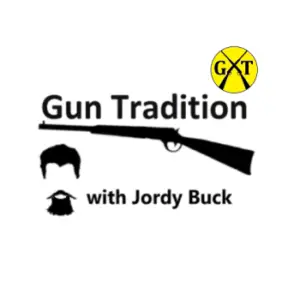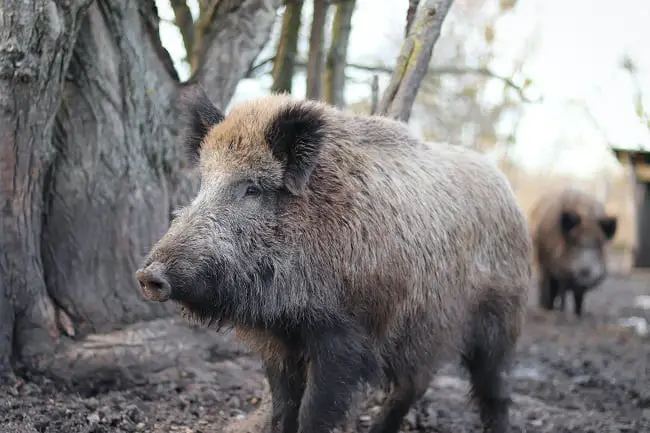The most common caliber for a pistol is 9mm. Due to its commonality, it’s used as a utility cartridge, to do almost any job. But is it enough to handle the chore of taking wild hogs?
A 9mm +P hollow point will kill most hogs out to 100 yards. Ammo like the 9mm Xtreme Penetrator is becoming a popular choice for a hog handgun. The 9mm is gaining popularity for hog hunting.
There is some controversy over this topic. There are strong arguments and stories on both sides. I draw from my experience taking hogs with mid-caliber (40 s&w and 9mm) handguns.
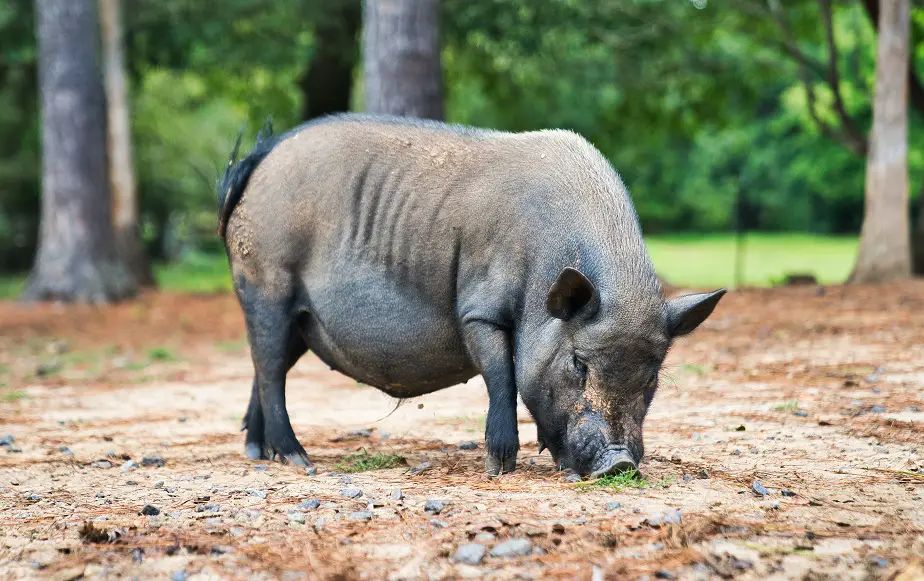
Is the 9mm Good for Hogs?
The 9mm cartridge of today will propel a 124-grain bullet at 1,120 feet per second with 345-foot pounds of energy. It may not be the best choice, but if you have one, it will work. Shot placement in relation to your bullet type is key.
In times gone past, a 36-caliber pistol loaded with black powder and a 79-grain lead ball was a common tool to take on small and mid-sized game. That combination will put out 1050 fps with 190-foot pounds of energy. In ballistics gelatin, it penetrates about 18 inches. Not exactly impressive.
In 1882, Winchester released the 32-20, precursor to the classic 30-30. The 32-20 was a .32 caliber bullet with 20 grains of black powder. It was snatched up across the country as an affordable option for small and mid-sized game. It became a common caliber for use on deer, pronghorn, and hogs up to 100 yards
The cartridge had similar ballistics to the 9mm, actually a bit less power. Modern offerings in the caliber have a 100-grain going bullet 1,210 feet per second with 325-foot pounds of energy at the muzzle. A 9mm pistol will put a 115-grain bullet at that speed, with more energy.
With the old-time calibers being less powerful than today’s options, hunters had to pick their shots carefully, waiting for a good broadside shot within a comfortable range. If you learn how to take only good shots, you will have little to no trouble successfully taking hogs with a 9mm pistol.
I hear concerns of the 9mm not penetrating enough for a hog. Let’s address that. The last 3 hogs I field dressed were mature boars between 120 and 180 pounds. It only takes a good hand width of penetration to penetrate both lungs. I have big hands though, figure about ten inches.
Short of getting stuck in the ball of the shoulder, any 9mm bullet will penetrate that far. Depending on the type of bullet, the 9mm will penetrate between 13 and 36 inches.
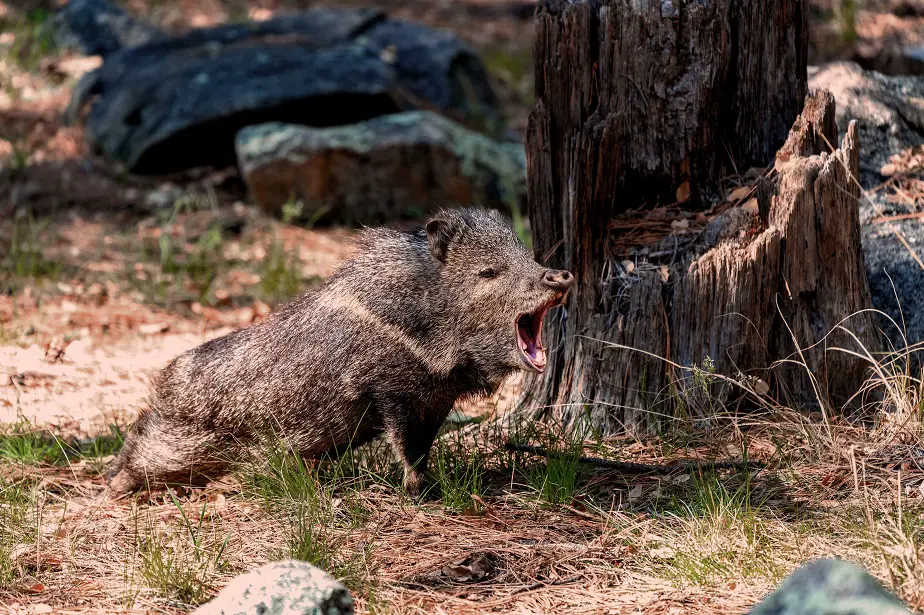
What 9mm Bullets Should I Use for Hogs?
Hogs come in a huge variety of sizes. An adult hog can be anywhere from 60 pounds to over 400 pounds. It all depends on the genetics of the hogs in an area. For example, the wild hogs in western Canada are common in the 300-pound range. While the southern Javelinas average 60 pounds.
If you want to shoot a smaller hog, say 100 pounds or under, really any bullet would work. Myself, I’m a sucker for cheap bullets. Remington UMC and PPU range ammo has worked for me, with good shot placement.
Realistically, the best bullets will be either hollow point or truncated. Hollow points will expand, causing a much wider wound channel, but with less penetration. Truncated bullets have a flat point on the tip called a metplat. A round nose bullet tends to become unstable and veer off course, limiting penetration.
The flat point keeps the bullet more stable than a round nose. A truncated bullet will cause a smaller but deeper wound channel than a how point. The truncated bullet is better when shooting through the shoulder, or if your bullet strikes the leg. The truncated design penetrates bone quite well.
Any hollow point should work fine on small hogs, if you don’t mind spending a little more on bullets. If you shoot with a how point, especially on a larger hog, remember that as a general rule they will not penetrate deep. That means you have to wait for a good shot.
If you want the deepest penetrating bullets on the market for 9mm, go with Buffalo Bore’s Heavy Outdoorsman +P. It’s a hardcast lead truncated design with a wide matplat, and it’s significantly heavier than normal 9mm rounds. The +P means it runs at 10 percent higher pressure than standard 9mm ammo.
Here is a story from a happy customer who used his 9mm with Buffalo Bore ammo to defend himself and a client from an angry grizzly bear. https://www.buffalobore.com/index.php?l=product_detail&p=388
9mm Shot Placement for Hogs
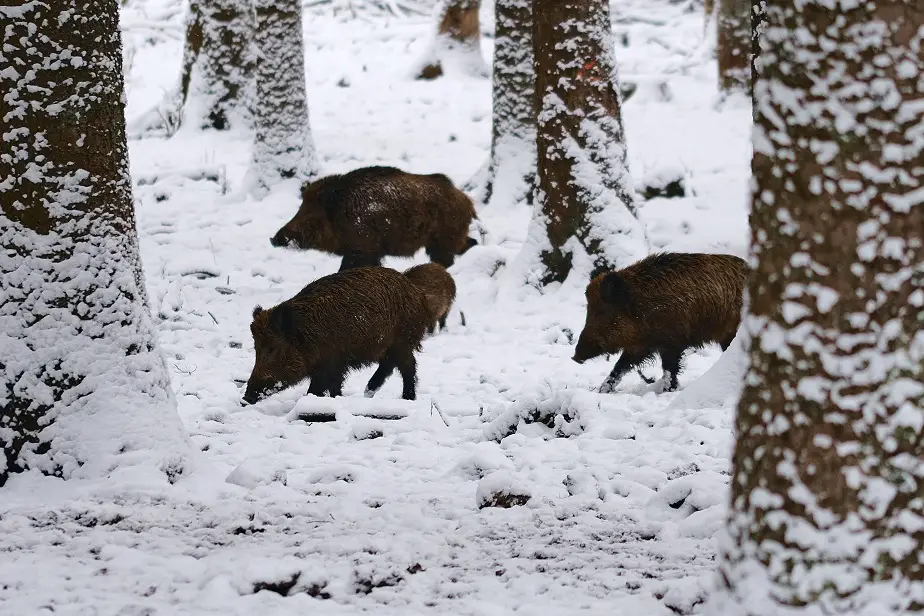
I keep saying to wait for a good shot. What does that mean exactly? What is good shot placement, is dependent upon your bullet, the position of the animal, your skill, your range, and the size of the animal. The best shot on any animal is always a standing broadside shot.
When hunting, there is an area to shoot known as the sweet spot. The sweet spot is the upper chest cavity, where the lungs and heart are. The perfect shot that you are looking for in the sweet spot is through both of the lungs. A double lung shot is the most practical shot to kill an animal.
The sweet spot starts behind the front leg and goes a third of the way to the back legs. You need to keep in the center of this area to hit the lungs. Be sure and avoid the front shoulder. The shoulder is a lot of muscle and bone that you have to go through before getting into the lungs.
The most perfect shot is with the animal standing still near a 90-degree angle to the trajectory of your bullet. In this position, the bullet has the shortest path through the upper chest cavity. You are likely to get a complete pass through, or near it, with a 9mm at common pistol distance.
If you are shooting a hollow point bullet, you should only take broadside shots. Hollowpoint bullets penetrate about a third of what a non-expanding bullet will. Since they don’t penetrate as far, you need to give it the shortest possible route through the vitals.
If you have to take out a big hog, I favor a shot to the head. It works faster. A shot to the lungs will still take a few minutes. If you want to put an animal down with one shot, you have to either hit it in the head or spine or break the shoulder.
Breaking the shoulder or leg on a pig will stop it in its tracks. A pig can’t stand on three legs. While not usually a lethal shot, a bullet through the leg bone, or shattering the shoulder will stop a pig in its tracks. It will, however, require a second shot to finish it. This technique is handy if you need to drop a charging hog.
How Far Can I Shoot Hogs With a 9mm?
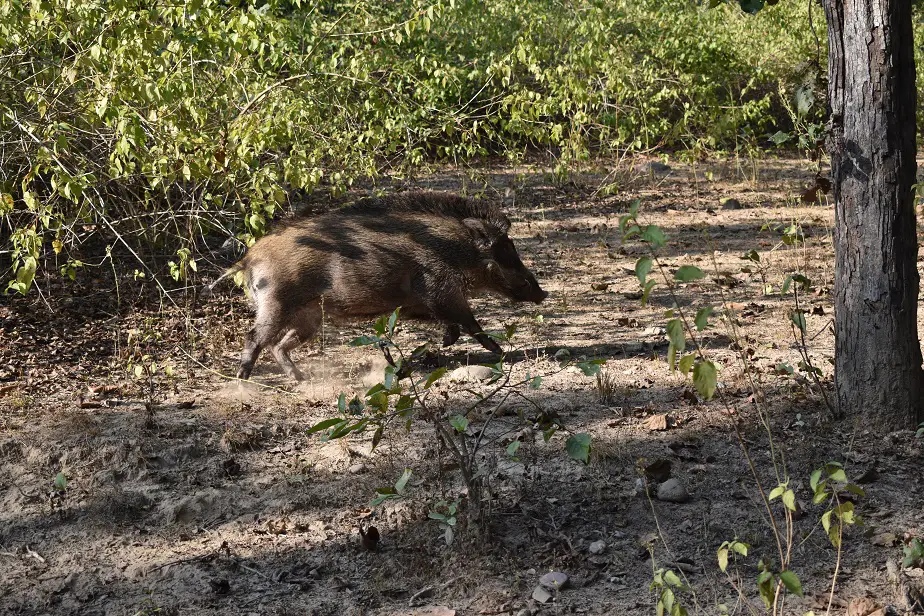
A better question is how well can you shoot? With a pistol, 50 yards is the farthest the 9mm has while retaining enough velocity to reliably do the job. I don’t know about you, but with my pistol, I’m not very proficient at 50 yards. After 50 yards the ballistics begin to drop off.
The old rule of thumb is the furthest distance you should shoot is the furthest you can keep all your shots inside a paper plate. That really holds up with hogs. Most handgun hunters keep it within 20 yards, though some can stretch it farther.
Increase your distance significantly by using a red dot. A longer barrel and +P ammo will give you more of an edge in power. The 9mm truly has become the all-purpose pistol cartridge in America.
As much as I like my 10mm AUTO, I have to admit the 9mm is a highly functional round with all of the modern advances in ammunition. If you’re interested in a comparison, I wrote an article on 9mm vs 10mm. Here’s a link to it.
